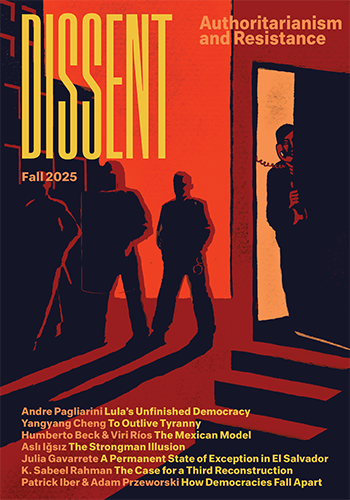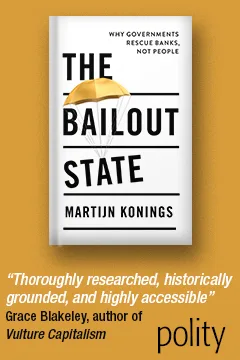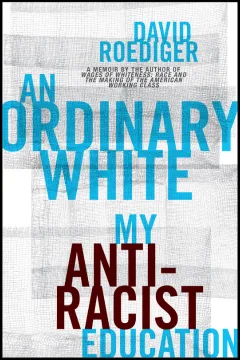The Battle Over Los Angeles’s Mansion Tax
The Battle Over Los Angeles’s Mansion Tax
The Measure ULA campaign shows how a housing-labor coalition can transform the political landscape, even in the face of staunch special interest reaction.

Carlos Casillas, a fifty-year-old renter in Los Angeles, lives in a 150-square-foot studio apartment in Highland Park, a longtime Latino neighborhood that has been gentrifying. The rent is $1,450 a month. “I had no choice,” he said. “I needed a place to live. So I told myself I gotta work three jobs.” Casillas drives for Uber and Postmates, does construction work, and is a first responder at a mental health center, dispatched by the L.A. Police Department to de-escalate potentially violent situations, most involving homeless persons.
A divorced father of three who was born and raised in Los Angeles, Casillas was worried that he might become homeless himself. “I was stressed out, living paycheck to paycheck,” he explained. “I had insomnia. It was hard for me to concentrate at work, to give 100 percent to the homeless clients I was supporting, knowing that I could be in their shoes at any given moment if anything goes wrong.” Fortunately, he saw a flyer for a local community organizing group, LA Más. Casillas attended a few meetings and met with the staff, who told him about a new rental assistance program for people threatened with eviction and helped him apply.
“When I finally got the email saying, congratulations, we are going to assist you with the funds for six months of back rent, I was in disbelief, in awe,” Casillas said. “I actually got down on my knees and prayed and gave thanks. It was a big weight off my shoulders, and I was able to breathe. And I was able to sleep again.” Without the assistance, Casillas would have been living in his car. “My main concern at the time was my children: the stress and the fear they would have had knowing that their father was homeless.”
Casillas was saved from eviction by a new L.A. law passed in November 2022. Though often called the “mansion tax,” the bill requires sellers of both residential and commercial properties valued above $5 million to pay a 4 percent tax, while sellers of properties of $10 million and up pay 5.5 percent. (The thresholds are adjusted for inflation each year.) The funds are used to help tenants stay in their homes and to support the construction of affordable housing.
Officially called Measure ULA (United to House LA), the law went into effect in April 2023, and it is likely the largest locally generated housing fund in any U.S. city. By November 30, 2024, it had raised $479 million from 713 transactions. That pace is likely to increase significantly once high interest rates—an obstacle to real estate construction and sales—decline.
According to the Institute on Taxation and Economic Policy, seventeen other cities and counties, including New York City and San Francisco, and seven states have enacted progressive taxes on high-price real estate sales. Still, similar measures have failed elsewhere. In March, Chicago voters rejected a proposed local tax on properties sold for over $1 million. Activists in Boston have tried three times, without success, to get the state legislature to allow the city to adopt a mansion tax. Voters in Santa Fe approved a mansion tax to create a funding stream for affordable housing, but the Santa Fe Association of Realtors challenged the law, arguing that the city lacked the legal authority to impose such a tax, and a judge agreed.
What accounts for the success of the campaign in Los Angeles, which now has the most progressive tax in the country? It is the result of years of work by a broad coalition of housing and labor activists, whose combined political experience and savvy overcame the opposition of local real estate and business interests. The national movement for housing justice can learn much from Los Angeles’s experience in the years ahead.
Between 2013 and 2023, the value of residential real estate in Los Angeles nearly doubled. Rents skyrocketed as landlords took advantage of a severe housing shortage. To spend no more than 30 percent of their household income on L.A. County’s median rent of $2,544 for a two-bedroom apartment, renters need to earn $48.92 per hour, according to the National Low Income Housing Coalition’s latest “Out of Reach” report. Renters’ actual median income is only $28.76, and of course many families earn much less. More than 45,000 Angelenos are without homes, including over 29,000 who are unsheltered, often living in tents that have proliferated on sidewalks and parks.
In 2019, a few veteran activists began talking about raising taxes on Los Angeles’s booming real estate economy to help address the city’s escalating housing crisis. They invited forty tenants’ rights, community, and labor organizers to a meeting to discuss the idea. While everyone agreed that such an effort was needed, they were reluctant to commit their organizations’ time or resources. But as Los Angeles’s housing crisis got worse—and polls showed that Angelenos viewed homelessness as the city’s most pressing problem—the idea kept percolating. In early 2020, just as the COVID-19 pandemic hit, the activists decided to move forward.
The pandemic both exacerbated the housing crisis and made clear that a bold policy was needed to forge a working alliance among housing, labor, religious, and social services groups. By mid-2020, leaders of several dozen organizations began meeting regularly to formulate a campaign to raise taxes on the most expensive real estate sales, in a way that could win support from a majority of voters. The goal was to place a measure on the November 2022 ballot, which was expected to be a high turnout election, including a contest for mayor.
Activists from different organizations don’t build coalitions simply because they agree about a problem and a solution. They also require trust—an elusive quality that develops slowly. Fortunately, over many years, many L.A. union and community activists, along with progressive public officials, had joined forces on a range of issue campaigns and electoral fights. The trust, respect, and personal ties formed from those campaigns were key to recruiting activists and organizations to launch the campaign that became Measure ULA, even as it still took more than a year of both group and one-on-one conversations to move the idea forward.
The coalition, known as United to House LA, had to address some potentially divisive matters. Nonprofit housing developers had long opposed efforts to pass a state law—pushed by the building trades unions—requiring union labor on government-subsidized low-income housing developments, arguing that the thin margins on such projects made it difficult to absorb the costs. But both sides realized that they had a stake in passing Measure ULA. Chris Hannan, the newly elected head of the Los Angeles/Orange Counties Building and Construction Trades Council, and Alan Greenlee, the executive director of the Southern California Association of Non Profit Housing, quickly reached a compromise on project labor agreements.
United to House LA wanted to establish a threshold for the tax that would generate significant revenue while also holding a strong appeal for voters. A report by local academics revealed that in fiscal year 2021–22, only 727 houses and condos had sold for more than $5 million—2.6 percent of all homes sold in the city. In other words, about 97 percent of transactions would not be subject to the new tax. A small proportion of all apartment complexes, office buildings, shopping malls, and other properties sold for over $5 million. Based on that data, proponents estimated that ULA would generate about $900 million a year. The ballot measure included a provision to create a citizen oversight commission to make sure that the funds are used the way the measure requires: 70 percent of the funds would be spent on building new affordable apartments, and 30 percent to prevent homelessness.
Hundreds of organizations endorsed the ULA campaign. Their members became deeply involved in door-knocking, phone-banking, and community meetings to make people aware of the measure and explain how it would address the homelessness crisis, help families facing eviction, and create jobs building more affordable housing, estimated at 26,000 units over a decade.
James Morgan, a fifty-four-year-old African-American journeyman construction worker and a member of Local 300 of the Laborers Union, was one of these volunteers. After serving in the U.S. Army, he became homeless and served a short term in prison—struggles that many veterans face. After leaving prison, he discovered the Anti-Recidivism Coalition, which partners with the building trades unions’ apprenticeship program. He was one of the ground troops with the ULA campaign, which he sees as a jobs program as well as a housing program. “I am an example of the impact these ballot measures can make,” he said. “My wife and I are saving for our first home. We want all Angelenos to be able to call someplace their home.”
The campaign did not ask any politicians to officially endorse the measure. Instead, the voices of low-income tenants and workers were featured in its messaging, on mailers, and on social media. They also recruited homeowners to express their support, knowing that a decisive victory would depend on at least half of homeowners voting yes. This work was guided by polls that revealed which demographic groups and neighborhoods strongly supported the measure (the goal was to get them to vote) and which were leaning toward support but still not committed (the goal was to persuade them to support it and then vote). This groundswell of grassroots support, along with the narrow targeting of the tax, persuaded the Los Angeles Times editorial board to endorse Measure ULA on October 4, more than a month before Election Day.
The ULA campaign raised $3.6 million in cash in addition to in-kind contributions. The funds were used for ads and flyers, polling, and a skeleton staff to oversee the organizing and media work. Most funds came from the unions. Community and social justice groups also helped fill the campaign coffers, with about $500,000. The United Way of Greater Los Angeles, which raises money for a variety of nonprofits, contributed $75,000, but even more important was the establishment credibility it brought to the effort.
The campaign faced strong opposition from California’s largest landlords, developers, and property managers, as well as lobby groups like the California Business Roundtable, the National Association of Realtors, and the Apartment Association of Greater Los Angeles. The anti-ULA effort raised close to $8 million, using this war chest for television and radio advertisements, mailers to tenants (falsely claiming that ULA would increase their rents) and homeowners, and paid canvassers, primarily in white and Latino homeowner neighborhoods. The real estate industry’s propaganda described Measure ULA as “the largest property tax increase in L.A. history,” a blatant misrepresentation since it is not a property tax, which is an annual assessment used for general government functions, but instead a one-time tax on real estate sales.
On November 8, 2022, Measure ULA won with 58 percent of the vote. About 45 percent of Los Angeles’s eligible voters cast votes, most of them by mail. The city council districts with the highest pro-ULA vote also had the highest proportion of renters. Already, over 31,000 tenant households have applied for $470 million in emergency rental assistance. So far, 4,302 households—an estimated 11,000 individuals—have received $30.4 million in aid, which provides up to six months of rent to low-income tenants who are at risk of homelessness due to unpaid rent as a result of COVID-19 or other financial hardship.
ULA funds have also helped over 14,000 renters facing landlord harassment and the threat of eviction, according to city figures. With that funding, Stay Housed LA, a countywide tenant legal services program, has expanded its program of legal representation to tenants in their eviction cases. In addition, ULA has provided funding to nine affordable housing projects so far, with 795 apartments under construction. Still, while ULA is now the city’s largest source of housing funds—more than it receives from the federal government—the city has been slow to allocate funds to needy tenants and new housing developments.
To defend Measure ULA in court and in public opinion, and to make sure that the city government fully implements the measure, United to House LA stayed together and hired Joe Donlin, a veteran organizer, as a full-time staff director. “Getting good stuff passed isn’t enough,” Donlin explained. “We needed to commit to the long haul of implementation, commit to working with the city—and sometimes pushing the city—to put the ULA money out there so it can help people.”
Soon after the activists celebrated their victory, corporate and real estate lobby groups decided to launch an insurrection against the voters’ decision. In December 2022 and January 2023, opponents including the Howard Jarvis Taxpayers Association and the Apartment Association of Greater Los Angeles filed lawsuits in state and federal courts challenging Measure ULA’s constitutionality.
Meanwhile, as the Los Angeles Times reported, “real estate agents said their inboxes were flooded with emails from accountants and attorneys offering solutions to avoid the tax.” The real estate industry tried to undermine the new law by encouraging wealthy property owners to sell their properties before the new law went into effect on April 1, 2023. Real estate sales over $5 million accounted for 7 percent of all transactions in the first quarter of 2022; in the first quarter of 2023, the portion of real estate sales over $5 million jumped to 12 percent. Had those 495 properties been sold after April 1, they would have added $270 million to ULA’s coffers.
Celebrities Mark Wahlberg and Brad Pitt were among those who sold their mansions before the ULA tax kicked in. In contrast, Jennifer Lopez waited until October 2023 to sell her eight-acre Bel Air estate and 14,000-square-foot home for $33.95 million, 21 percent higher than her 2016 purchase price of $28 million. The property sale paid $1.87 million to ULA.
Even after ULA went into effect on April 1, luxury realtors advised their wealthy clients to delay selling their properties, claiming that the lawsuits would prevail and they wouldn’t have to pay the tax. These actions deprived the city of some anticipated revenue for the first few months after the law kicked in. In effect, some of Los Angeles’s wealthiest property owners went on strike against the city’s poorest and neediest residents.
In September 2023, a federal judge dismissed the legal challenge; the following month, the state superior court did the same. But opponents kept up their assault. Business and real estate lobby groups paid for signatures to put a measure on the November 2024 state ballot to raise the threshold to increase local special taxes from a majority to two-thirds of voters—a ploy that, if passed, would have repealed Measure ULA. Governor Gavin Newsom and Democratic legislators, with the support of unions, mayors and local officials, and housing activist groups, petitioned the state Supreme Court last September to intervene. In June, the top court ruled that the business-backed measure violated the state constitution and could not go before voters in November.
All the while, the state’s corporate ruling class kept up its propaganda war, claiming that ULA was destroying the L.A. real estate market by discouraging developers from building new properties and property owners from selling their buildings. These groups have relentlessly fed misleading claims to news outlets to discredit the ULA tax. A headline on one Los Angeles Times story blamed the law for a “chill to LA’s luxury market.” “My clients are leaving L.A.,” Jason Oppenheim, a luxury real estate agent who stars in the reality show Selling Sunset, told the Los Angeles Times. Another luxury agent, Juliette Hohnen, told the Hollywood Reporter: “Really what you’re doing is you’re just making it impossible for people to afford to own property in L.A.” Nearly every news story has focused on ULA’s alleged negative impact on developers and wealthy property owners. None of the reporters talked to renters like Casillas, who avoided eviction thanks to ULA funds, or to union construction workers like Morgan, who are building the new apartments made possible by ULA. By the summer of 2024, many real estate professionals conceded that the luxury home market had adjusted to ULA and was returning to normal, but they continued to publicly attack the law as anti-business.
Business and real estate lobby groups see the battle against the law as part of a wider war to reverse Los Angeles’s progressive gains over the past decade, including a citywide minimum wage of $17.28. Their goal is to weaken the city’s worker and renter protections and to slash progressive taxes. Last year they formed a new political action committee, Thrive LA, to defeat progressive city council members who have been allies of labor and tenant groups. In their first effort, they failed to unseat Nithya Raman, who was reelected in March. In November, another progressive activist, tenants’ rights lawyer Ysabel Jurado, won her bid for city council seat despite the opposition of real estate influence-peddlers. The latter are now gearing up to find candidates to oppose Eunisses Hernandez and Hugo Soto-Martínez, both former organizers who won city council seats in 2022 and will be up for reelection in 2026.
“Real estate lobby groups exist in order to push for maximum profit for their clients, so of course they have been fighting this tooth and nail,” said Laura Raymond, executive director of ACT-LA (a group that advocates for progressive housing and transportation policies) and co-chair of the ULA campaign. “But the fact is this is good public policy, and it is popular. Realtors and developers are now factoring in ULA as part of their calculations, and—let’s be real—they are still making a ton of money.”
The facts support Raymond’s point. ULA monthly revenues have steadily increased, reaching a high of seventy-one transactions and $39.6 million in revenue in July 2024 alone.
In November, the same coalition that passed Measure ULA successfully mobilized to double the quarter-cent sales tax in L.A. County to pay for programs to prevent homelessness. Although county voters are generally more conservative than those in the City of Los Angeles, the sales tax garnered 57 percent support. It is expected to generate over $1 billion a year, much of it targeted for Los Angeles, a city of 4 million people (10 million live in the larger county).
That victory was also a vote of confidence for Mayor Karen Bass, who was elected the same day Measure ULA passed, despite being outspent by more than ten-to-one by her deep-pocketed rival, billionaire developer Rick Caruso. Bass has staked her reputation on dramatically reducing the number of homeless people on the streets, an issue that has mobilized local businesses and homeowner associations. She has made progress shutting down many homeless encampments, but housing activists claim that too many of the people moved into motels and other temporary dwellings wind up back on the streets.
Like many cities, Los Angeles faces a harsh reality: for every affordable apartment added to the inventory, even more renters lose their homes to rising rents. A statewide law passed in 1995, backed by California’s landlord lobby—the Costa–Hawkins Act—exacerbates this situation by prohibiting cities from regulating rents when a unit becomes vacant. This creates a perverse incentive for landlords to evict tenants, often by illegal means, including harassment, so they can raise rents on new tenants to market levels. Few renters know their rights regarding landlord harassment and eviction practices, or health and safety codes. The result has been a steadily increasing number of apartments with market-level rents in Los Angeles, San Francisco, and other cities.
Housing activists lost statewide ballot measures in 2018 and 2020 to repeal Costa–Hawkins in order to allow cities to pass their own rent control laws. They tried again this year with Proposition 33, and again failed, with only 40 percent of voters statewide supporting the proposition. Its proponents spent $48 million, almost all of it from the AIDS Healthcare Foundation (AHF)—a well-endowed nonprofit that earns revenue through its network of pharmacies and clinics that provide primary care to patients, paid by Medicaid—whose quirky CEO sees himself as a housing leader. The real estate and business community, meanwhile, spent $125 million to defeat the proposition, claiming the measure would hurt tenants and stifle new housing construction.
Unlike the Measure ULA advocates, who were significantly outspent but pulled together an impressive ground game, the Proposition 33 effort lacked a grassroots campaign. AHF poured its money into TV ads but didn’t invest in supporting local tenant groups to engage renters or liberal homeowners.
As in most states, California tenants—who represent about 45 percent of the population—are not well organized. Two different statewide coalitions, Tenants Together and Housing NOW, have built impressive networks but still lack the resources to reach most tenants. Even in major cities, tenant organizations have relatively few members. In Los Angeles, where 63 percent of households rent their homes, at least a dozen community groups organize renters, but the combined membership of the city’s tenant and community organizing groups likely totals no more than a few thousand renters.
Their small staffs include some of the city’s savviest organizers, but each group is relatively isolated by neighborhood. And there are many tenant-heavy parts of Los Angeles without any group at all that focuses on renters’ rights. Activists come together to discuss policy ideas to present to elected officials and mobilize tenants, but there is no citywide tenant coalition to target the worst or biggest landlords, marshal support to help elect city officials through a pro-tenant PAC, or agree on an overall political and policy strategy.
In contrast, the 300 unions within the Los Angeles County Federation of Labor represent over 800,000 workers. According to union leaders, the majority of Los Angeles’s union members are renters. If the goal is to mobilize tenants to exercise power and change housing policy that will benefit their members, unions have a major role to play.
The unions’ involvement in the United to House LA coalition reflects a growing understanding that better wages won through collective bargaining can be wiped out by rent increases, and that rising rents are forcing members to live further and further from their workplaces. A few unions have incorporated housing issues into their contract demands. But few have so far made electoral candidates’ stands on housing issues a litmus tests for their political endorsements. Nor have most unions joined forces with tenants’ rights groups to forge a common housing agenda.
The Measure ULA campaign revealed the potential for a powerful labor-housing movement that could transform Los Angeles’s political landscape. Similar partnerships in other California cities could, if they worked together, win substantial victories at the state level as well. The same is true in other states.
America’s housing crisis is evident in every city and many suburbs. There is no state in the country where a full-time minimum-wage worker can afford a two-bedroom apartment at the fair market rent, according to the National Low Income Housing Coalition. Half of all renters spend more than 30 percent of their income just to put a roof over their heads; over 12 million households have housing costs that consume more than half of their income. Young families can’t afford to buy a home, and many existing homeowners worry about missing their monthly mortgage payments and facing foreclosure. The decline in homeownership among young people has increased demand for apartments, but most new rental housing built in recent years has been high-end units. The nation confronts a growing epidemic of homelessness, including among many people with jobs and children.
Federal housing policy today ignores most of the poor and offers little for the near-poor and the fragile lower-middle class. Only about one-quarter of families who are eligible for assistance receive it. In fact, the federal government spends more on tax breaks for well-off homeowners than on subsidiesfor low-income renters. And with Republicans now in charge of the federal government, we can expect significant cuts in federal housing aid to the poor and weakening of federal laws against racial discrimination by landlords and lenders. Republicans may even try to cut federal funding to cities that adopt rent control laws.
What’s the solution? A growing number of housing activists and experts want the United States to adopt a version of what Europeans call social housing. This involves government support for housing owned by nonprofit organizations that don’t rely on private financing and thus can keep homes permanently affordable by insulating them from speculation and other market forces.
The idea is gaining traction. In 2023, the New York Times featured a long article, “Imagine a Renters’ Utopia,” describing Vienna’s long-standing and successful social housing program. (In the United States, direct government subsidies cover less than 4 percent of America’s housing stock, in contrast to 15 percent to 40 percent in Western Europe; in Vienna, that figure is 60 percent.) In September, Representative Alexandria Ocasio-Cortez and Senator Tina Smith outlined such a plan in a New York Times op-ed. Measure ULA establishes three integrated social housing programs, each of which receives a portion of the tax funds.
The housing crisis will only worsen unless federal, state, and local governments devote more funds to build more affordable housing, provide rental assistance to working families, and protect current renters from skyrocketing rents. This, in turn, will only happen if renters (who represent between half and two-thirds of residents in most cities) and their allies among homeowners build a powerful movement for housing justice.
The labor movement is crucial to this effort. Unions have a long history of support for decent housing. They sponsored the first social housing projects in the early 1900s. In 1934, union leaders and housing reformers created the Labor Housing Conference to push Franklin D. Roosevelt to create jobs and improve workers’ living conditions by funding government-owned and union-sponsored housing. Through the 1970s, unions used their political clout to support federal funding for housing. But as their membership numbers plummeted—from 25 percent of all workers to 10 percent today—unions stopped viewing housing as a priority.
A new cohort of labor activists is now seeking to rekindle unions’ movement spirit. Part of organized labor’s recent renewal has been a growing recognition that unions do better in gaining support and winning workplace elections—and at electing pro-worker political candidates—when they address the social and community concerns of their members and potential members (such as healthcare, child care, and housing) as well as workplace issues.
Organized labor clearly has a stake in progressive national housing policy that builds more apartments and protects tenants. About one-third of union members—and a vast majority of workers whom the movement hopes to recruit—are renters. If unions invested resources to organize tenants, it would have significant payoffs for advancing social justice and electing progressive candidates. An analysis by a real estate research group found that if renter election turnout had matched that of homeowners in the 2016 election, Hillary Clinton would have defeated Trump.
In 1934, Catherine Bauer, who led the Labor Housing Conference, wrote that “there would never be a real housing movement until workers and consumers organized an effective demand: that housing is a major political issue or it is nothing.” Ninety years later, that’s still true.
Peter Dreier is a professor of politics and the founding chair of the Urban & Environmental Policy Department at Occidental College.






